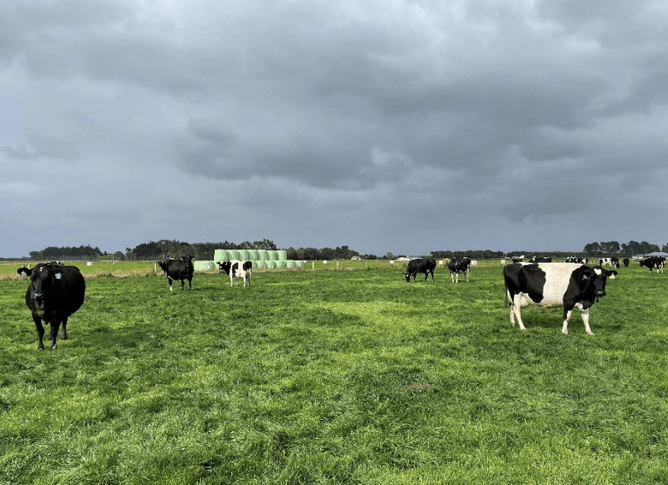Our critical focus is on keeping cows in the pasture of the correct length and best quality this week with any paddocks above pre-grazed target being earmarked for baleage.
Key Decisions this week:
Feed
• The 12-month-old grasses are going through a period of quite uneven growth potentially due to compaction issues. These paddocks are a high priority for aeration once conditions allow. In the Std farmlets these paddocks will continue to get N after grazing, however for those in the LI farmlets the decision was made to bring forward their autumn application now to try and improve quality and growth.
• Topping will continue post grazing in selected paddocks due to the amount of stem and seed head across the farm. This season’s new grass paddocks will also be topped primarily for weed control.
• Overall farmlet rotation length will remain at approximately 30 days however for new grass paddocks these will be on a return interval of only 14-20 days to ensure a shorter pre graze target for quality control and to ensure residuals are achieved.
• Nitrogen will continue for standard herds this week as well as the new grasses to assist tiller development.
Milk
• Milk production has declined again this week despite sufficient feeding levels. We attribute this to a combination of the quality of the pasture on offer and the heat over the last week. Visible signs of heat stress were observed on several days and breathing data from the collars indicated increased respiration
• Production season to date is still up for both the LI herds with the LI Kale herd performing better on a per ha basis
• The herds remain on twice a day milking (TAD) however we will continue to reassess this weekly based on pasture growth and BCS.
Wintering
• The FB crops for this coming winter have been sprayed over the last week. Due to the high weed content a heavier rate of chemicals was used resulting in the ‘burning’ of the outer leaves. It is also worth noting that it is recommended for most sprays that they should not be applied in hot conditions (above 29 C) so the weather may have also contributed to the leaf damage.
Animals:
• BCS was completed this week and the Std Kale herd at a herd average level scored higher than the other 3 herds.
• We have started discussions around culling and identification of animals for reduced milking frequency to achieve pre-calving BCS targets of 5.0 or 5.5 (R3’s).
• A sprinkler system has been used in the yard to provide the cows with water for cooling during the afternoon milking throughout this period of higher temperatures.
• After scanning is completed next week a list will be formed of potential culls and depending on works space, the bulk of these culls will go in February and March.
• The remaining bulls that were lame last week have all now left the farm.
• Results have come back from last week’s blood tests for selenium and iodine levels. The Se levels are sufficient so the top-up of Se has been removed, however, the additional iodine will remain in the system for another 6 weeks.
Environment
• Effluent application will be prioritised going forward on effluent paddocks that have had less than 15kgN for the season to date.
• We test our effluent monthly and use this alongside the application rate data from Halo to calculate the kg N applied to each paddock.
• Season to date over 7.5 million litres of effluent has been applied. The kgN/ha applied in paddocks eligible for the effluent range between 0 and 29.5kgN/ha so far this season.
Click the link below to download our full weekly notes


